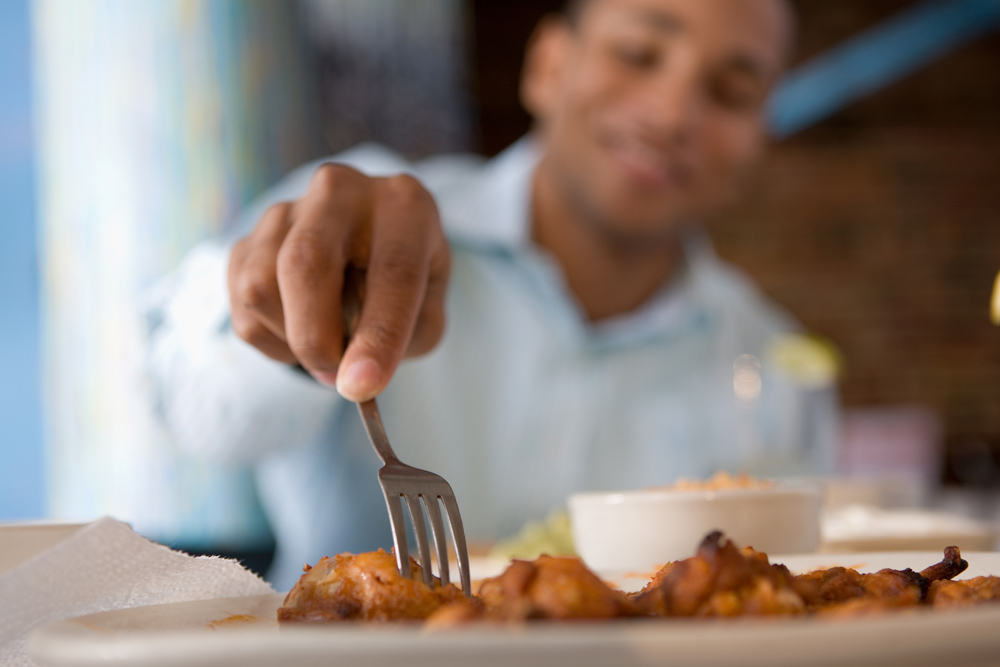Fall—and football season—are finally here. That also means chicken wing season is here! Any full-service restaurant or bar with chicken wings on its menu knows that this is the time of the year when chicken wing prices go up, and prices this year promise to be on par with previous ones.
Chicken wing prices (jumbo) have been running around $1.67 per pound as compared to $1.60 per pound last year during the same period. Prices are higher this year due to a combination of reasons.
First of all, chicken wings are more popular than ever. According to the National Chicken Council's (NCC) 2015 Wing Report, 1.25 billion wings were consumed during Super Bowl XLIX—enough to circle the Grand Canyon 120 times—and the number for Super Bowl 50 looks to be no different.
And while avian influenza didn’t directly impact the broiler chickens that supply the wings commonly used in foodservice, avian influenza deeply affected turkey inventories. As of June 1, according to the Center for Infectious Disease Research and Policy, more than 8.3 million turkeys had been impacted by avian influenza. This means the demand has increased for other forms of protein, including chicken wings. And because turkey inventories will remain on high alert throughout the remainder of 2015, chicken will continue to be viewed as an alternative to many turkey-based dishes.
Heavy broiler weights also have contributed to the chicken output challenge, limiting the supply on certain sizes of wings that are most popular on restaurant menus.
Because of these factors, the challenges that many operators now have is how to price their wings. Wings are purchased by the pound, yet are sold by the piece. When wing sizes are inconsistent, operators tend to pick through the wings that provide the best presentation, often tossing out the rejects because they are too large or too small to serve to their customers.
While there is no fast and easy solution to the rising cost of wings, there are some ways operators can reduce the impact.
1. Make sure your supplier provides consistent wing sizes based on clear and concise specifications. Having more stringent specifications might slightly add to the delivered cost per pound; however, it will offset the cost of wasting the off-sized wings that end up in the trash. And rather than throwing away any off-sized wings, operators can use the meat in other menu items, or make them part of a Super Bowl or football promotion that ties in to a sampling of appetizers.
2. Look for chicken wing alternatives that can be offered at a lower cost. Many chicken manufacturers have created various products, such as chicken bites and chicken fritters, that are made from various chicken by-products at a lower cost than wings. Once they are covered in breading, deep-fried, and lathered in a spicy buffalo sauce, they can serve as a viable alternative to the chicken wing. Chicken bites have also increased in popularity over the last several years, so consumers should already be familiar with the product. Offer the bites or fritters in a variety of styles—such as buffalo or barbecue—and pair them with a variety of sauces.
3. Don’t sell wings by the piece; instead, state orders on the menu as “small,” “medium,” or “large.” A minimum piece count can be provided so the customer can make sure they have enough for everyone in their party. For example, a “small” order could be a quarter pound, “medium” could be a half pound, and a “large” order could be a full pound. Most customers won’t mind one or two pieces that aren’t perfect, and operationally, a restaurant can control its food costs better using this method.
Chicken wing prices will likely continue to strengthen through the end of the year. There may be some temporary dips in the market, but overall, the market will remain firm. Restaurant operators don't have to fall victim to a rise in chicken wing prices. Rather, they can implement many of the viable creative solutions available to help keep costs at bay.
The opinions of contributors are their own. Publication of their writing does not imply endorsement by FSR magazine or Journalistic Inc.













